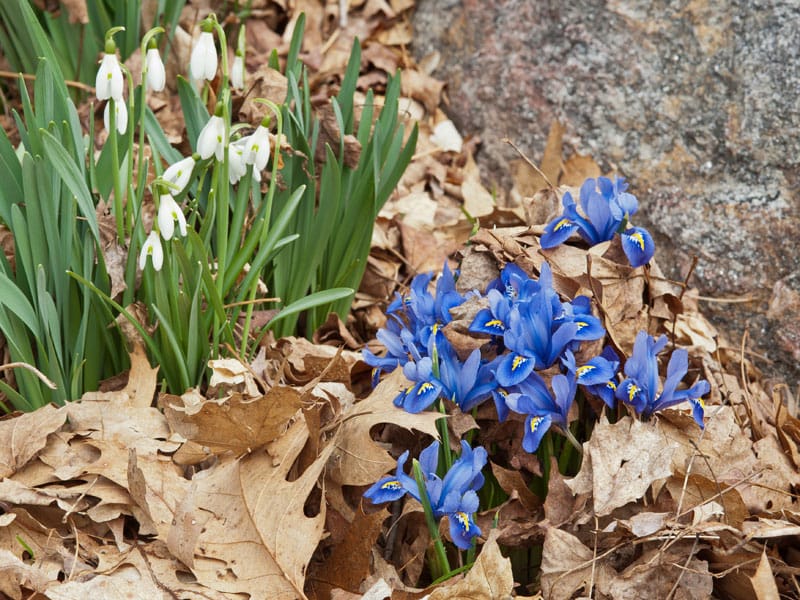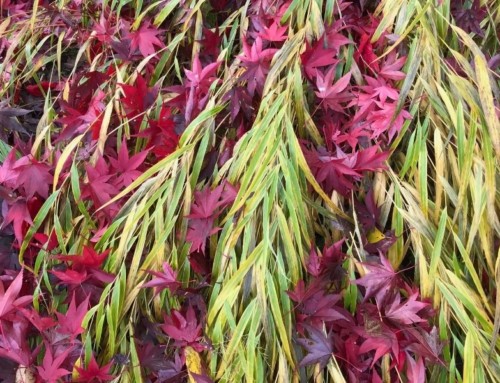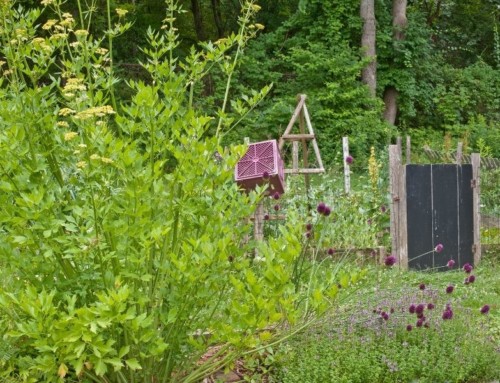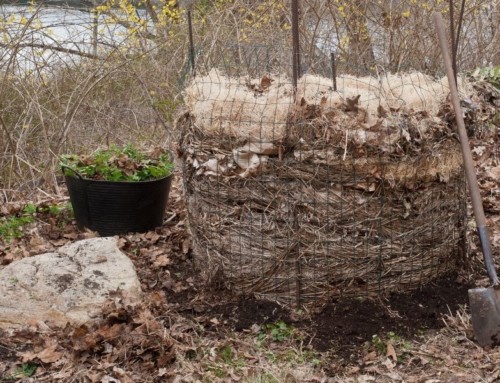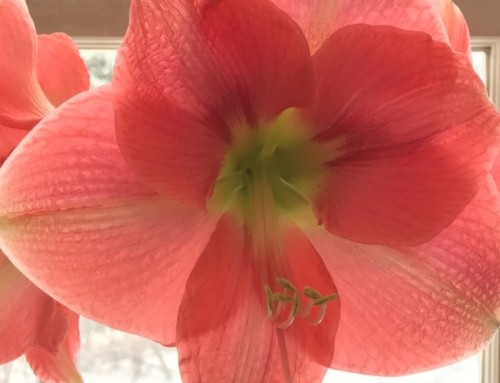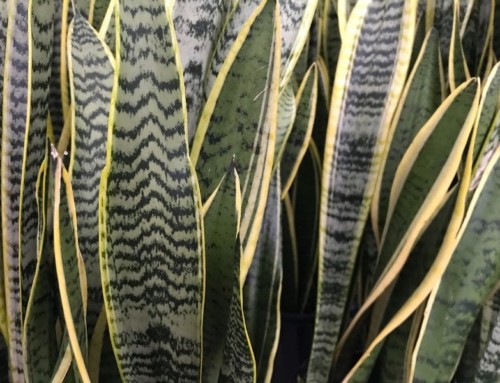If you can’t wait to get out into the garden beds, hold your horses. The spaces between soil particles are crucial for air, water-holding capacity and microbial life. Stepping on wet soil collapses these spaces. To avoid soil compaction, don’t even walk on the lawn if you can help it.
Stay on paths, paved surfaces, stepping stones or still-frozen ground – and practice stretching. If you really must set foot in a bed, land on Lamium, tough flopping yucca leaves or something you don’t care about. Plan to plunk down more stepping stones once you can see where the plants are.
If you can reach …
- Pick up sticks
- Cut back dried grasses before they put out new growth
- Acorus gramineus ‘Ogon’ has been a sunshiny presence all winter, but doesn’t look so hot right now. Time to cut it back to the ground and wait for fresh new blades. Same rule of thumb for sedges, heucheras, etc. – if it looks bad, cut it off.
- Hellebore buds are showing and ready to stand up and bloom. I usually just snip off individual winterburned leaves and leave any reasonably attractive foliage, but this year it’s all ugly.
- Cut Epimedium foliage ASAP. Hedge clippers make fast work of it. Once budded stems emerge (always surprisingly early) it’s a picky time-consuming job to cut each individual old stem without beheading blooms-to-be. Lovely new foliage will follow the flowers.
- When you cut back late-emerging perennial stalks, leave a few inches to remind you not to step on them or think it’s a place you can plant something new. Butterfly weed, plumbago (Ceratostigma plumbaginoides) and many other fine plants take their sweet time to emerge in spring.
- A nice fluffy mulch of dry leaves insulates early bulbs and perennials and protects overwintering insects. A pile of heavy sodden ones is a different story. Gently pull them off by hand before they smother everything trying to pop up below.
- Don’t forget the deer spray
